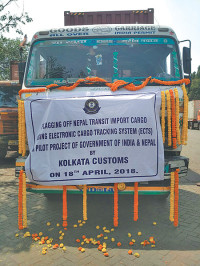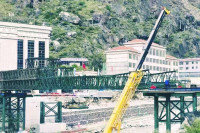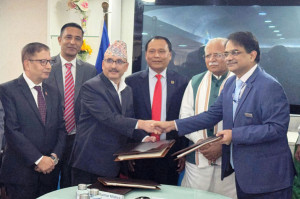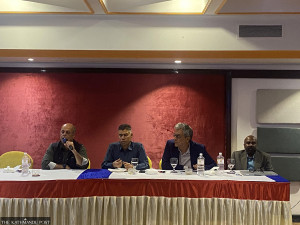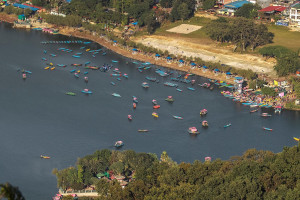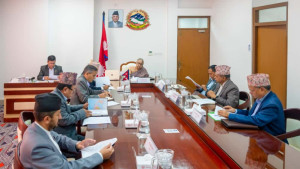Money
Planned Buddhist Circuit tour remains on paper
The development of a Buddhist Circuit connecting a string of Buddhist pilgrimage sites in Rupandehi, Kapilvastu and Nawalparasi districts remains limited to discussions, raising questions over the fate of the project touted to lure millions of international tourists annually.
Manoj Paudel
The development of a Buddhist Circuit connecting a string of Buddhist pilgrimage sites in Rupandehi, Kapilvastu and Nawalparasi districts remains limited to discussions, raising questions over the fate of the project touted to lure millions of international tourists annually.
Numerous formal and informal meetings have been held on the development of the route linking pilgrimage sites of historical and archaeological importance. However, the Lumbini Development Trust (LDT) which is in charge of conserving Buddhist holy places in the three districts, has not been able to come up with a concrete plan to start the project.
“Although various development activities are being carried out under small scattered projects without any coordination, a master plan to develop a Buddhist Circuit is lacking,” said the LDT project manager.
The Ministry of Tourism is planning to construct a Buddhist Circuit with a loan from the Asian Development Bank. A team of experts and technicians was formed with tourism expert Rabi Jung Pandey as coordinator.
The team has been assigned a larger task to submit a report for a Buddhist circuit extending from Haleshi in Khotang district in the east to Dullu in Dailekh district in the west, and even through Kalikot district to Manasarovar in China. The team started work last July with a one-year timeline.
Lila Mani Sharma, secretary of the Hotel Association of Siddharthanagar, said, “It would be more effective to include only important pilgrimage sites. Core pilgrimage sites like Devadaha, the maternal home of the Buddha’s mother, Ramagram that houses the Buddha’s relics, and the birthplace Lumbini, with at least seven Buddhist sites in Kapilvastu, should not be left out.”
He added, “The Buddha Circuit should include seven important Buddhist pilgrimage sites in Kapilvastu: Tilaurakot, Gotihawa, Niglihawa, Sagarhawa, Araurakot, Nigrodharam and Sihaniya.”
Most of the routes leading to various pilgrimage and archaeological sites related to the Buddha are dilapidated. The road to Gotihawa, birthplace of Krakuchanda Buddha, is dusty during the summer and muddy during the rainy season.
Likewise, the road to the ‘palace of the Massacre of the Shakyas’ at Sagarhawa is badly damaged. The road to Tilaurakot is filled with potholes and in need of urgent repair. The road connecting Dhamnihawa Stupa, 1.5 km from Tilaurakot, is also dilapidated.
Tourism entrepreneur Hem Bahadur Bista said, “As Buddhist pilgrim sites in three districts lack functional road access, many willing visitors cannot go to such places. Even those tourists who manage to visit hardly stay for long.”
Tour guide Shiva Sharma said, “Tourists are not interested in visiting various Buddhist sites due to lack of road access and smoke and dust on the roads.”
Tourism entrepreneur Ram Chandra Sedhai said, “Better road access through coordination among locals should be prioritised before starting conservation work on the sites. However, rural municipalities, municipalities
and district coordination committees are constructing roads according to their local priority.”
LDT head archaeological officer Krishna Bahadur KC said, “Buddhists coming to Tilaurakot to gain a spiritual experience by touching the soil return immediately due to lack of road access and other amenities.”
Phra Shri Bodhibidhsha Supot Kittiwannole, head of the Royal Thai Bihar in Lumbini, said, “Buddhists coming to see the ruins of Tilaurakot’s main palace and recite the sutras and learn about the childhood of Gautam Buddha feel disappointed by the dusty environment. For that reason, it is necessary to work to develop pilgrimage sites according to a plan.”




 13.12°C Kathmandu
13.12°C Kathmandu
